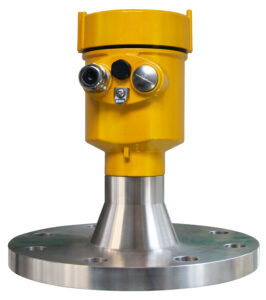Smart radar level meters and high-frequency radar level meters are both non-contact measurements where microwave signals are transmitted and received via an antenna.
The antenna can be of various types: insulated rod type, conical couch type, and parabolic type. Insulated rod antennas are usually made of polymer materials such as PTFE and polypropylene, which have good corrosion resistance and can be used for strong acids, alkalis, and other media.
However, the microwave emission angle is larger (about 30 °), for the tank structure, is more complex, and interference echo will be more, sometimes more complicated debugging.
A comparison of the 6.3GHz Smart Ray horn antenna with the 26GHz Loudspeaker diameter and frequency is shown in the following table.
Microwave frequency 6.3GHz C-band 26GHz K-band
Antenna size/mm φ96 φ146 φ196 φ242 φ46 φ76 φ96 φ121
Beam angle (°) 30 20 16 14 18 12 8 6
At the same frequency, the larger the diameter of the conical horn, the smaller the transmitting angle. The parabolic antenna launch angle is the smallest, about 4 °, but the antenna size is larger.
If you use a C band, the diameter of φ242, the size of the opening to ≥ 250mm, installation and use are not very convenient. Emission angle is small, microwave energy concentration, can measure a longer distance (or lower dielectric constant of the material, can also have a strong echo), due to the beam range is small, interference echoless can measure a narrower silo.


